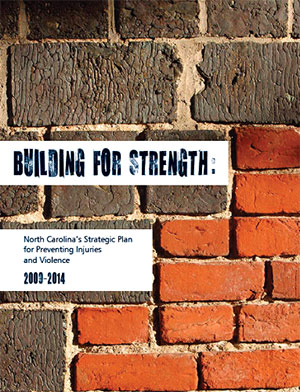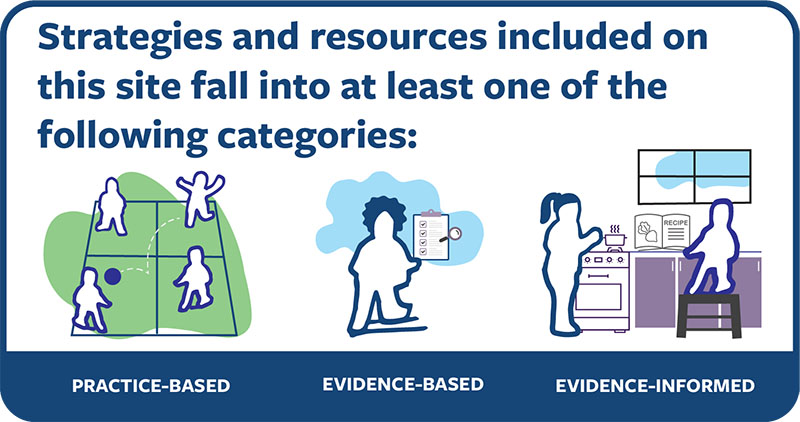Prevent Violence NC Mission
Bringing violence prevention theory together with practical strategies that can make measurable improvements in the lives of all North Carolinians.
History and Founding Partners
 Prevent Violence NC (PVNC) is currently curated and maintained by the North Carolina Coalition Against Domestic Violence, but it is the product of a highly a collaborative effort between five statewide partner agencies.
Prevent Violence NC (PVNC) is currently curated and maintained by the North Carolina Coalition Against Domestic Violence, but it is the product of a highly a collaborative effort between five statewide partner agencies.
PVNC began in 2009 when the North Carolina Division of Public Health, Injury and Violence Prevention Branch published a 5-year strategic plan to reduce the burden of injury and violence across the state, called Building for Strength. The Violence Prevention Goal Team formed to oversee the violence-related goals of the 2009 – 2014 plan and identified the need to define, provide data, and recommend strategies to address the following prioritized violence outcomes:
- Child maltreatment
- Intimate partner violence
- Sexual violence
- Suicide
- Youth violence
With increasing recognition of the links between each of these forms of violence, the team chose to grant special attention to prevention strategies capable of influencing more than one of these outcomes; such strategies are more likely to maximize use of available resources, foster new partnerships, and increase public health impact.
PVNC is intended to facilitate coordination of strengths-based violence prevention efforts across agencies in North Carolina and at multiple levels of the social ecological model. It provides summaries of the research, strategies, and resources available to support communities in coordinated violence prevention and health promotion efforts.
The PVNC shared risk and protection framework continues to shape state-wide collaborations and prevention work today:
- Current Injury and Violence Prevention Strategic Plan
- Injury Free NC Academy
- North Carolina Violence Prevention Coordinating Team
Founding Partners
![]() North Carolina Coalition Against Domestic Violence is the statewide non-profit membership organization providing support services to local domestic violence agencies and allied professionals. NCCADV’s purpose is to strengthen the network of people working to end domestic violence in NC.
North Carolina Coalition Against Domestic Violence is the statewide non-profit membership organization providing support services to local domestic violence agencies and allied professionals. NCCADV’s purpose is to strengthen the network of people working to end domestic violence in NC.
![]() North Carolina Coalition Against Sexual Assault is the sole statewide expert working to end sexual violence and human trafficking through education, advocacy, and legislation. NCCASA provides prevention education, intervention resources, and public policy to end all forms of sexual violence.
North Carolina Coalition Against Sexual Assault is the sole statewide expert working to end sexual violence and human trafficking through education, advocacy, and legislation. NCCASA provides prevention education, intervention resources, and public policy to end all forms of sexual violence.
![]() North Carolina Department of Health and Human Services, Division of Public Health, Chronic Disease and Injury Section works to reduce death and disabilities through education, policy change and various services. CDI’s goal is to help all North Carolinians develop healthy and safe communities and health systems to prevent and control chronic diseases and to eliminate health inequities.
North Carolina Department of Health and Human Services, Division of Public Health, Chronic Disease and Injury Section works to reduce death and disabilities through education, policy change and various services. CDI’s goal is to help all North Carolinians develop healthy and safe communities and health systems to prevent and control chronic diseases and to eliminate health inequities.
![]() North Carolina Department of Health and Human Services, Division of Public Health, Women’s and Children’s Health Section works to assure, promote and protect the health and development of families with emphasis on women, infants, children and youth. WCH programs place a major emphasis on the provision of preventive health services beginning in the pre-pregnancy period and extending throughout childhood.
North Carolina Department of Health and Human Services, Division of Public Health, Women’s and Children’s Health Section works to assure, promote and protect the health and development of families with emphasis on women, infants, children and youth. WCH programs place a major emphasis on the provision of preventive health services beginning in the pre-pregnancy period and extending throughout childhood.
![]() North Carolina Department of Public Safety, Division of Adult Corrections and Juvenile Justice is responsible for the care, custody and supervision of all adults and juveniles sentenced after conviction for violations of North Carolina law. For juveniles, the focus is on strengthening families, promoting delinquency prevention, supporting core social institutions, intervening immediately and effectively when delinquent behavior occurs, and identifying and controlling the small group of serious, violent, and chronic juvenile offenders in the local communities.
North Carolina Department of Public Safety, Division of Adult Corrections and Juvenile Justice is responsible for the care, custody and supervision of all adults and juveniles sentenced after conviction for violations of North Carolina law. For juveniles, the focus is on strengthening families, promoting delinquency prevention, supporting core social institutions, intervening immediately and effectively when delinquent behavior occurs, and identifying and controlling the small group of serious, violent, and chronic juvenile offenders in the local communities.
Methods
A variety of methods were used to construct the database of resources, and strategies, including:
Academic literature review to identify risk and protective factors shared by the five prioritized forms of violence
- Articles were evaluated for the following criteria:
- Published in a peer-reviewed journal
- Demonstrated an association between a risk/protective factor and one or more violence outcomes OR
- Were determined by researchers to have a strong theoretical linkage to one or more violence outcomes
- Risk and protective factors were prioritized if evidence was found to support their association with 2 or more of the 5 prioritized violence outcomes
- Conceptually similar risk and protective factors were combined into five themes to simplify strategy selection
Interviews with key stakeholders to assess current NC state plans to address each of the 5 prioritized violence outcomes. Interview were also later conducted with local programs implementing evidence-based or evidence-informed strategies to address one or more of the shared risk and protective factors
Academic literature search to identify evidence-based and evidence-informed strategies to address the shared risk and protective factors
Web search to identify resources to support planning, implementation, evaluation, and funding of relevant strategies
Development of strategy inclusion criteria
Strategies were included if the evidence to support their effectiveness met the following criteria to be described as practice-based, evidence-based, or evidence informed. The strategy and programs listed on PVNC are not exhaustive. They are a starting point from which to begin developing a prevention plan relevant for your community.
Evidence Categories

To be considered for inclusion, strategies and programs meet the following criteria:
Practice-based:
- programs or strategies that have not yet been rigorously evaluated but are widely considered culturally appropriate, relevant, and effective within the communities in which they are employed OR
- have been rigorously evaluated in a non-research setting
Evidence-based: Multiple randomized controlled trials (RCT) or quasi-experimental designs show effectiveness in more than one setting; considered the “gold-standard” of research evidence
Evidence-informed: Includes programs often labeled as “promising” or “emerging” in program databases; programs demonstrate:
- Some evidence of effectiveness/expected preventive effect
- Non-experimental design/sound theory only
- Replication without evaluation
- Promise for real-world application
Strategies should not show any indication of creating harm, including increasing/creating disparities, based on criteria adapted from North Carolina Smart Start and Centers for Disease Control and Prevention (CDC).
Contact

